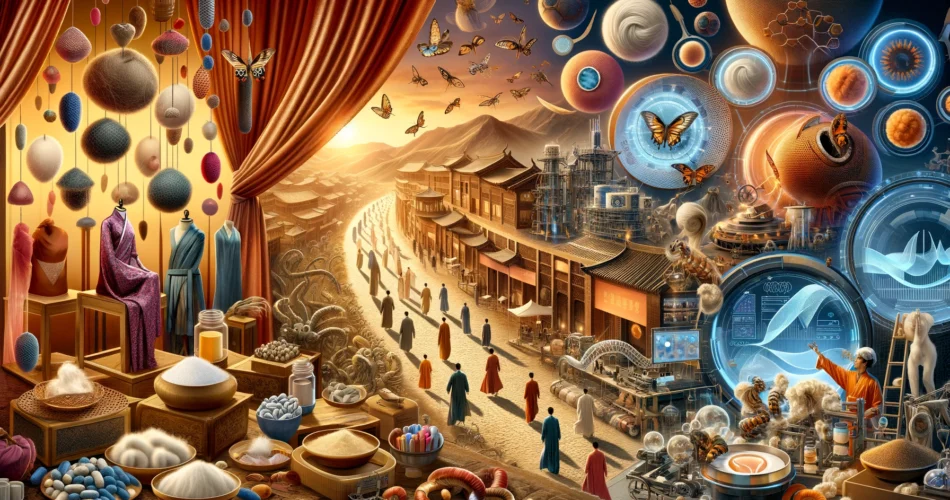Silk: a material synonymous with luxury, elegance, and sophistication. Often regarded as a symbol of opulence, its soft caress against the skin makes it a coveted fabric worldwide. However, beyond its allure lies a story deeply entwined with innovation, sustainability, and a promising future in technology. This exploration delves into the fascinating world of silk, revealing its origins, unique properties, and potential as a beacon of future technologies.
From Ancient Threads to Modern Marvels
The Evolution of Silk
Silk’s journey begins with a humble insect: the Bombyx Mori moth. Unlike its colorful, wild ancestors, Bombyx Mori has been so thoroughly domesticated over approximately 4,000 years that it depends on humans for survival. This moth’s life cycle, culminating in the production of silk through complete metamorphosis, has fascinated humans for millennia. The silk it produces, known for its incredible tensile strength and elasticity, owes its properties to the repetitive sequences of proteins, making it a material of choice for a range of applications from ancient surgical sutures to modern body armor.
Silk in Sustainability and Innovation
As we pivot towards sustainability, silk presents itself as a viable alternative to hydrocarbon-based materials. Its biodegradability and carbon-locking capabilities during its lifecycle, from the mulberry leaves consumed by the moths to the final silk products, highlight its environmental benefits. However, traditional silk harvesting methods, which often involve killing the moth, pose ethical and sustainability concerns. Innovations such as those by Professor Neri Oxman at the MIT Media Lab, who utilized silkworms to create architectural structures, showcase the potential for humane and sustainable silk production methods.
The Technological Promise of Silk
Beyond Fabrics: Silk in Technology
The intersection of biology and technology opens new avenues for silk’s application. Its use in creating electronic interfaces, stabilizing vaccines and medications, and even aiding in regenerative medicine exemplifies silk’s versatility. These advancements, primarily derived from the domesticated Bombyx Mori, hint at a future where silk could replace plastics and play a crucial role in waste reduction and sustainable material science.
Exploring the Wilder Side of Silk
While Bombyx Mori has been the focus of silk production, the world of wild silks remains largely untapped. These silks, produced by a variety of moths across the globe, offer superior qualities such as higher breaking stress, opening up further possibilities for technological applications. The exploration of wild silks not only broadens our understanding of natural materials but also honors the indigenous knowledge and the contributions of women scientists who have studied these materials, often without recognition.
The Future Woven by Spider Silk
The Quest for Spider Silk
Spider silk, known for its extraordinary strength and potential applications, has eluded mass production due to spiders’ unsuitability for domestication and their cannibalistic nature. Innovative approaches, such as genetically modifying organisms like bacteria, yeast, and even goats to produce spider silk, represent the cutting edge of biotechnology. These efforts aim to harness spider silk’s properties for use in textiles, medical devices, and even structural materials.
Embracing Nature’s Ingenuity
A Call to Biomimicry
The journey of silk, from the Bombyx Mori cocoon to the innovative realms of biotechnology, exemplifies the potential of natural materials in shaping a sustainable future. As we continue to confront environmental challenges, turning to nature for solutions offers a path forward. By embracing biomimicry and exploring the vast potential of silk and other biological materials, we can devise sustainable alternatives that harmonize with our planet’s ecosystems.
Conclusion: Weaving a Sustainable Future with Silk
The story of silk, woven through centuries of human history, culture, and innovation, presents a compelling narrative of transformation. As we stand at the crossroads of environmental sustainability and technological advancement, silk offers a bridge to a future where luxury and technology merge with ecological responsibility. By reimagining the role of natural materials in our lives, we can weave a tapestry of solutions that safeguard our planet for generations to come.

